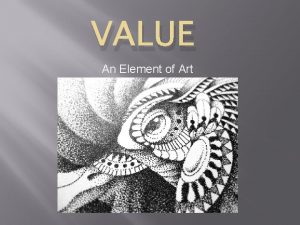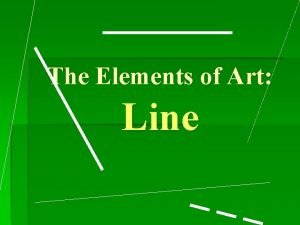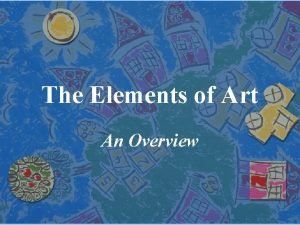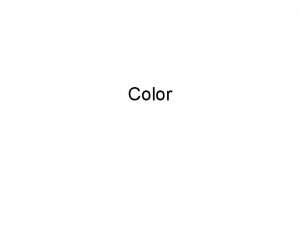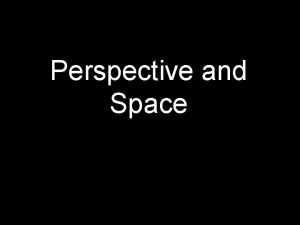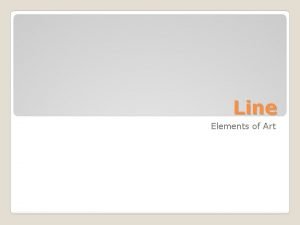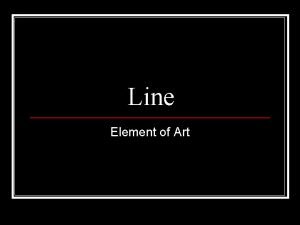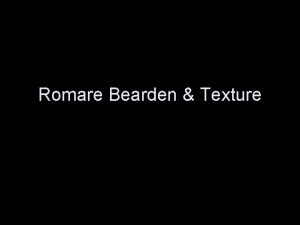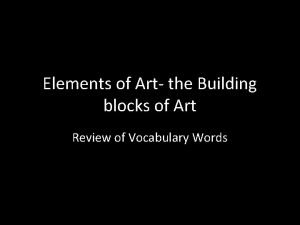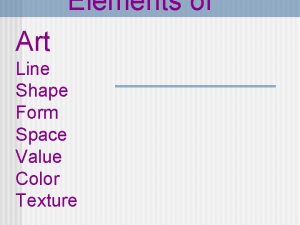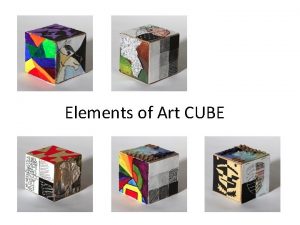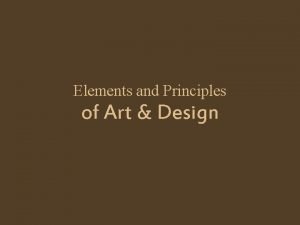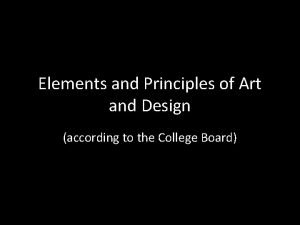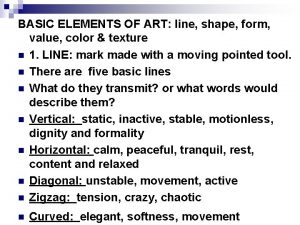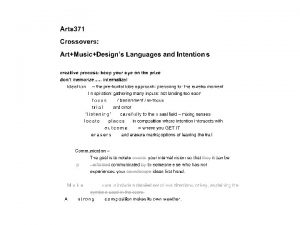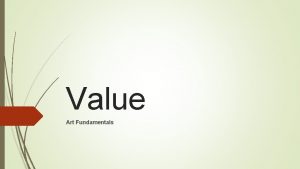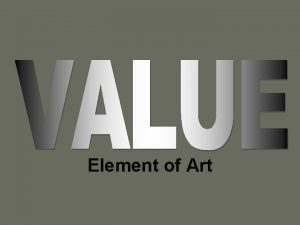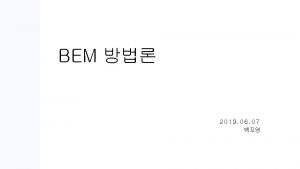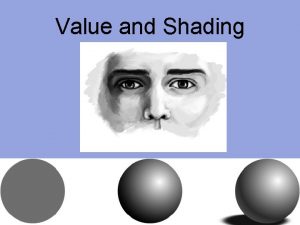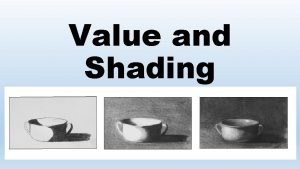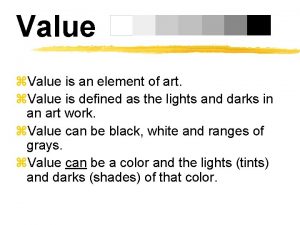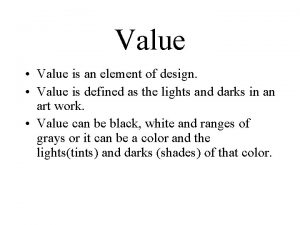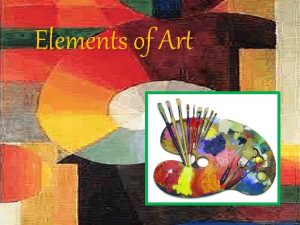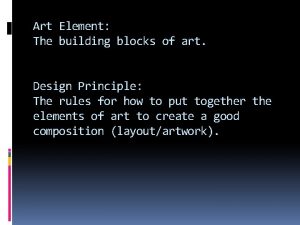VALUE An Element of Art Value What is



















- Slides: 19

VALUE An Element of Art

Value What is value? • Value is how light or dark an object is (or appears to be) • Value makes objects appear • 3 -D when they are truly 2 -D (flat)

Value Can… � � Create CONTRAST – the difference between light and dark Create FORM– the illusion of 3 D shapes Create TEXTURE – the surface quality of an object Create VARIATION – using different values to create interest in an art piece; variation in value helps “set the mood” of the piece

Value Creating Contrast The light hands next to the dark background creates contrast

Value Creating Form Value creates the sense of eggs on otherwise flat paper

Value Creating Texture Value creates the cat’s fur

Value Creating Variety The use of different values in the same drawing creates variety

Drawing Value � One of the most common ways to learn about value is to make a value scale Value scales are named by how many boxes there are Below is a six-part value scale

Tools & Materials Ø Ø GRAPHITE CHARCOAL � Charcoal Pencil § Vine Charcoal � § Ø Ø CONTE CRAYON INK PENS Illustration (mm) Ø Pen & Ink (India Ink) Ø GRAPHITE RANGES: 6 H, 4 H, 2 H, F, HB B, 2 B, 4 B, 6 B TORTILLION/ STUMP (ESTOMPE) ERASERS � Rubber (Pink Pearl) � Gum Art Eraser � Kneaded Eraser � White Vinyl Eraser

Creating Value � � SHADING Use the side of your pencil and a tortillion/blender to bring a range of tones to a drawing

Creating Value � � HATCHING Distinct parallel lines close or far in distance to one another to mimic shading Not scribbling, precise and intentional

Creating Value � � CROSS-HATCHING Distinct parallel lines and a second set of lines overlapping to create further value Usually on a diagonal

Creating Value � � STIPPLING Small dots close together to form dark value and further in distance to create light value Methodical not random points


Curvature � � When drawing, it’s important to make sure your shading follows the form If your shading doesn’t follow the form, it will visually flatten what you worked so hard to make appear 3 D

3 VALUE SCALES Instructions � � Use a new paper in your sketchbook, a ruler, and a H pencil Create 3 rectangles that are 2” x 8” each 2” wide 8” long

Next Step… Use the ruler to divide the box into 1” compartments (You’ll have 8) 1) Hatching (watch demonstration) 2) Shading 3) Grey Scales (paper)

Shading � � � Starting with the second box of your top strip, create the lightest value you can I recommend going SLOWLY and using your 4 H pencil Make it close to white, but a little darker Like this!

Value Scales Continued � � Continue this process for each square, making it a little darker than the one before it Your last square should be as dark as you can make it, without pushing hard � Don’t push so hard you make it “shiny” or break your pencil, rip your paper, etc.
 Elements of art color photography
Elements of art color photography Value art element
Value art element Difference between signal element and data element
Difference between signal element and data element Signal element vs data element
Signal element vs data element Apa itu value creation
Apa itu value creation Element of line in art
Element of line in art 5 element art
5 element art Is the most expressive element of art.
Is the most expressive element of art. Space element of art
Space element of art Art elements line
Art elements line It is lines that change direction gradually
It is lines that change direction gradually What are the 6 elements of art
What are the 6 elements of art Romare bearden three folk musicians
Romare bearden three folk musicians What are the building blocks of art
What are the building blocks of art Asymmetrical shapes
Asymmetrical shapes Elements of art line example
Elements of art line example Element and principles of art
Element and principles of art Balance element of art
Balance element of art Line shape form
Line shape form Plane design element
Plane design element

